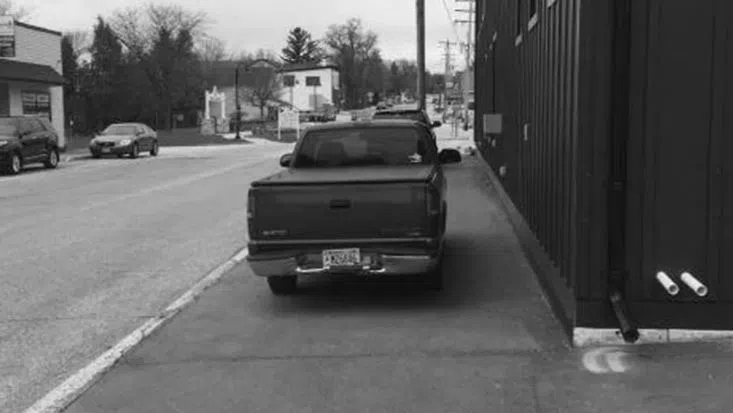
Area of proposed sidewalk in Egg Harbor along Highway G. (Image courtesy of Wisconsin Supreme Court)
DOOR COUNTY, WI (WTAQ-WLUK) – Egg Harbor has the right to condemn land to build a sidewalk, the Wisconsin Supreme Court ruled Wednesday.
Egg Harbor condemned part of the land where the Shipwrecked Brew Pub and Restaurant is located along Highway G, in order to build a sidewalk to alleviate pedestrian safety concerns. The land totaled .009 acres. The owners, Sojenhomer LLC, sued, arguing such acquisition isn’t allowed under state law.
The circuit court ruled for the village, while the appeals court ruled for the restaurant. The Supreme Court heard arguments in the case in December.
In a 4-3 decision, the court ruled in the village’s favor.
Writing for the majority, Justice Rebecca Dallet rejected the Sojenhomer argument.
“Sojenhomer argues that sidewalks are pedestrian ways, and that the Village therefore lacked authority to condemn the property to build a sidewalk. We disagree. When read in context, the definition of pedestrian way in 346.02(8)(a) does not include sidewalks. Accordingly, we hold that 32.015 and 61.34(3)(b) did not prohibit the Village from condemning Sojenhomer’s property, and reverse the court of appeals’ contrary decision,” she wrote.
In a dissent, Justice Annette Ziegler said the restaurant’s argument was persuasive.
“I agree with the analysis of the court of appeals, which held that the Village improperly used the power of condemnation to acquire Sojenhomer’s property to build a sidewalk. The plain language of the statute demonstrates that the term “pedestrian way” is broadly defined, and includes sidewalks. A sidewalk——that portion of the highway created for the travel of persons on foot——is clearly a subset of pedestrian ways——walks set apart or assigned for the use of pedestrian travel. It is a straightforward, common sense interpretation of the statutory language that a “walk designated for the use of pedestrian travel” necessarily includes that part of the highway “constructed for the use of pedestrians” and intended “for the use of persons on foot.” The Village exceeded its condemnation authority when it acquired Sojenhomer’s property through condemnation to construct a sidewalk. In other words, a closer look at the plain meaning of the statutes reveals that all sidewalks are pedestrian ways, but that not all pedestrian ways are sidewalks,” the dissent states.









Comments